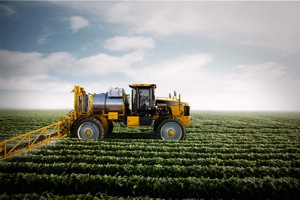Last year was an important one for agriculture. Almost all areas of the market were up considerably, with many tire dealers and tire manufacturers seeing a record year in sales and profits.
I have been around agriculture all my life and last year was one not seen since the heydays of the 1970s.
There were headwinds, too: Rising raw material prices caused tire prices to escalate. The demands of a global OE market caused tire shortages for the replacement market, which made inventories difficult to manage.
But with global demand increasing for food and alternative fuels, the market in North America looks very bright, indeed.
This can be attributed to many factors. For example, the increased usage of ethanol as an alternative fuel source has caused an increased demand for corn. With more corn going to ethanol, the prices for feed corn stayed high, causing ranchers’ production costs to escalate. As the ranchers costs have increased, so has the price of beef cattle, buoyed by the demands and changing appetites of the population in the U.S. and emerging countries.
Along with the demand for corn, there are pressures on other commodities, such as wheat and soybeans. They now are all competing for a finite amount of tillable acres that are available. And because the prices are favorable, farmers are taking more ground out of land set aside as part of federally subsidized programs and putting that land back into production.
All of that means the farmer has to work more hours on more acres – which requires more efficient equipment and tires, or tracks, on the ground to do the job.
A study by the International Food Policy Research Institute published in May 2011 predicted that demand for major grains like corn, rice and wheat will increase 48% from 2000 to 2025 and 70% between 2000 and 2050, with a doubling of meat consumption by 2050.
As populations grow and emerging middle classes expand around the globe, so do their changing habits and tastes in foods, which has an impact on beef and grains. Think about how that alone will change farming and the tires that go with it.
New Tire Requirements
New technology will certainly drive the industry. Already, tires for the future are being developed, and some are even in the market right now.
In the sprayer market, a standard tire is a 380/90R46. Because of the high transport speeds and the loads that a sprayer carries, a standard R1 or R1-W tread design is not conducive for long wear and roading, so unique tread patterns have been designed by tire manufactures.
Also, because of the high loads and speeds involved, it has become impractical to alternate the air pressure from field to transport. That led to improved casing designs such as the VF (very high flexion) or IF (increased flexion) designations that have been introduced to the market.
Michelin was the first company to introduce VF-rated tires for sprayer applications. The tires could be run at reduced air pressures for higher loads in the field and at transport speeds, an important attribute because air pressure directly affects compaction. The lower the air pressure, the lower the compaction, which can mean improved yields and profits for the farmer.
In the past, it was thought that a standard R1 or R1-W rear tractor tire would be suitable for both large four-wheel tractors and combines. It is my experience that the applications are quite different and both require a tire designed to meet the specific duty.
Tractors in the field work under steady drawbar and forces, while combine tires have high cyclic loads and increased stress on the sidewall due to flexing. There are now tires being produced that are designated only for combine use.
In Europe, Goodyear introduced the Optitrac H+ tire for combines with a load bonus of up to 55% in cyclic applications. Also, tires for combines are becoming bigger and wider. Bridgestone has introduced a 900/75R32 tire for Class 9 and 10 combines. The Firestone-brand tire stands 86 inches tall and is able to handle greater loads at lower pressures.
Tractors are getting bigger and faster. Like tires on cars and pickups, you will also see the trend of tires going to a lower sidewall for both narrow- and wide-based tires. The lower sidewall gives improved performance, footprint and ride to the tractor, combine or implement.
As well as low sidewall or low aspect ratio tires, group 50 tires (91 inches outer diameter) are being designed for both row crop and tillage applications – tall and narrow tires for row crop and tall and wide tires for four-wheel drive tractors. An example for a 4WD tractor tire would be Titan’s 1100/45R46 DT930, which is able to handle high loads with lower sidewall deflection for improved performance and handling in the field. Another common size is the 850/75R42, popular for ultra-high horsepower tractors.
Meeting Customer Demands
Moving ahead, tire dealers will have to be prepared with properly trained people, the right equipment and service trucks to handle the job. They will have to carry a broader inventory to meet the needs of their varied customers. After the ag tire shortages of 2011, dealers should be planning on what their inventory needs are for the entire year and working closely with manufacturers to get their tires.
Tire manufacturers will have to continue to develop new technology and increase capacity to meet the needs of an ever-growing market.
Dealers must prepare as best they can for the future with the people, products and training so they can adapt to the changing technologies in the market. By taking care of customers and staying on top of the trends, the savvy dealer will pull ahead of the competition.
Last but not least, never forget that the farmer is the most complete tire customer out there – they need tires from every category. You may hear that again from me the future.













